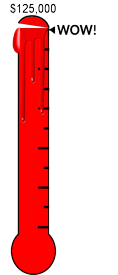

Thanks to your support in 2020!
“No great mind has ever existed without a touch of madness.” – Aristotle
Yesterday Bell Canada celebrated its Lets Talk About Mental Health Day, and over 100,000,000 text, tweets, shares and calls helped raise millions of dollars for mental health initiatives. We were happy to participate in #BellLetsTalk on Twitter not only in celebration of Bell’s wonderful community building initiative, but also to show our support to the millions of Canadians living with mental illness.
What does textile recycling have to do with mental illness? A lot, when you are a committed barrier employer like TWD!
Life happens. Sometimes it’s biological, heredity or even life experiences that leave an imprint. For some, temporary life experiences cause temporary issues like anxiety or situational depression. Sometimes issues can arise that are very difficult to handle, and telling an employee to “leave your problems at home” is not the solution.
Every day 500,000 Canadians miss work due to some form of mental illness. At TWD, the opposite is true. Our staff have been known to show up on days off just for a laugh and a hug….and for some of staffer Marissa’s home cooking!
We know that when the work environment is loving and supportive, work can be a great therapeutic confidence building practice. At TWD we threw antiquated, restrained protocol out the window. We operate on the premise that love heals all things. We encourage a sense of humour, and embrace our eccentricities. We are flexible, and offer options like telecommuting, job sharing and flexible scheduling to accommodate individual productivity rhythms.
We understand that financial stress can compound issues around mental illness. Our staff can sit with our president at any time and talk about anything going on in their lives, with no judgement. Whether it’s financial trouble or a broken heart, he’s always there to lend advice and a hand.
There are many jobs in the textile recycling industry that are well suited to employees suffering various forms of mental illness.
We have several employees that live with PTSD, meaning the social aspect of many workplaces can be problematic for them. Many of our team find great success working in maintenance. They work independently, during off-quiet hours, and some even job-share any customer contact tasks they’d rather not deal with. The physical aspect of the job is also therapeutic.The best part is, its a well paying job which helps to alleviating financial stress.
At the corporate level, we have found some of our most innovative thinkers and problem solvers also live with issues like anxiety, insomnia, or depression. We don’t have strict start times at corporate headquarters, we have to-do lists. As long as the work gets done well, we aren’t restrictive on when/how it happens.
Our therapy dog Sarah is also on hand every day to offer kisses and cuddles to anyone needing support. She’s very intuitive, and is always at the feet of employees experiencing stressful moments to offer affection.
Mental illness doesn’t have to be a barrier to success in the workplace. At TWD, we embrace the whole person, we are flexible and accommodating. Our staff is happy, productive and loyal.
It’s simple: Love is good for business, and we encourage all companies to adopt more open dialogue around issues of mental health.